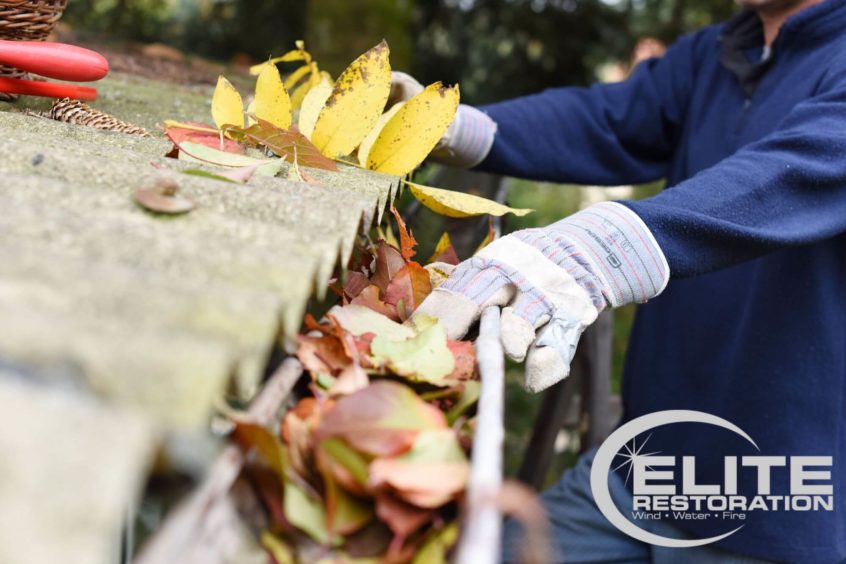Spring Cleaning – Rain Gutters

How often should you clean out your gutters?
As a general rule, you should always clean out your gutters one to two times a year, once in the Fall and again in the Spring. If you have pine trees or other evergreen trees that drop needles and leaves year round, it’s a good idea to clean your gutters at least once a season to prevent any blockages or backups.
Why should you clean out your gutters?
The biggest reason to keep your rain gutters clean and flowing freely is to prevent water damage to your home. This is especially important in the winter when meltwater is running down your roof, and during the springtime when seasonal rains happen. If there is nowhere for this water to drain, it will sit on your roof or along your eaves and can seep into your home and cause water damage to your roof and siding. Read more about how Elite Restoration can help repair and restore water damage here.
Safety First!
- Make sure to use a ladder that is the proper height for the job. You should never stand further up on a ladder than the safety instructions indicate. If you can’t reach the gutters from a safe height, you need a taller ladder.
- Use a stabilizer for tall ladders. You should have 3-4 points of contact between your ladder and solid ground. A stabilizer can help provide another point of contact.
- Consider hiring a professional if you don’t have the proper equipment to safely perform this chore yourself.
- Use personal protective gear such as gloves and goggles to protect yourself from any loose debris or dust.
How to Clean Your Gutters
- Try to work before a rain, or wait a few days after the last rain before you start. If you try and clean your gutters while they’re full of water, you’re in for a messy and soggy job!
- Start working from the downspout and move toward the closed end of your gutter. This way you won’t push debris toward the downspout, potentially causing a clog.
- Begin by removing any large debris, such as sticks, twigs, or broken shingles.
- Once bigger pieces of debris have been removed, use a small hand trowel or a gutter scoop to remove leaves and smaller debris.
- Once you’ve finished, use a hose with a sprayer attachment to flush and leftover dirt out through your downspout. If water doesn’t flow freely out the downspout, check for clogs!
- After everything has been cleaned out, inspect your gutters and spouts for rust, damage, or leaks. Small repairs can be made using gutter sealant, but you should consider replacing seriously damaged parts.
- This is the perfect time to add a fresh coat of paint and make everything look fresh and new.
- Now that you’re done, consider adding gutter screens to make future cleanups even easier!
Don’t hesitate to call Elite Restoration if you notice water damage to your roof or siding while you work. Catching and fixing these problems early can help make sure you’re only paying for small repairs now, rather than extensive renovations in the future!
Need help? Contact Elite Restoration now!

